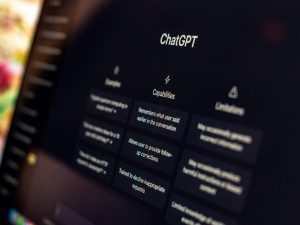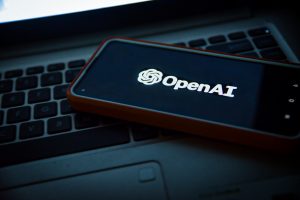GPT-4, the latest language model in the famed GPT series developed by OpenAI, has amazed developers and users alike with its improved ability to understand prompts and provide pointed responses to a greater degree of accuracy. While industry experts, scientists, and economists mull over the impact of these advanced tools on human life and activity, it might just be the right time to understand the potential implications of the cutting-edge tool on students and their educational aspirations. It is important to note that educational policymakers and academics were already concerned about the growing usage of ChatGPT, which ran on GPT-4’s predecessor GPT-3.5. With the new advancements in the latest iteration of the language model, AI might just be indicative of the future of learning in a world that becomes increasingly reliant on AI and machine learning.
Despite limited access to GPT-4, experts, OpenAI’s partners, and developers have reviewed OpenAI’s chatbot based on it and have been quick to comment on its many improvements and refurbishments over its previous versions. While capable, the AI’s parent company makes it abundantly clear that GPT-4 is still lacking in a large array of capabilities that can be carried out by human beings. It becomes important to note that despite exhibiting human-like capacities in certain scenarios, it is no replacement for human teachers and a conducive, humane environment for learning. However, it is important to assess the effects GPT-4 might have in transforming education in the long run, given that the development of artificial intelligence is approaching critical mass with the progressive advancements in machine learning, linguistics, and natural language processing.
What the Release of GPT-4 Means for Education

GPT-4’s improvements bear implications for academicians looking to explore its prospects in higher learning.
While the primary concerns surrounding GPT-3 were its impacts on writing, academic essays, and research papers, GPT-4 has begun changing the perception of AI at large by scoring well and showing near-human capability when taking several standardized tests. The numerous improvements the novel language model has brought to the table in a matter of months are indicative of the pace with which neural networks are being trained and revamped. With a greater capacity to indulge in and create fact-based outputs for its users, GPT-4 is better equipped to generate text and content that remains factually accurate, consistent, and coherent, regardless of the length. Another important facet of the development and deployment of advanced language models also surrounds the integration of these technologies with search engines and other chatbots, creating tools that might not only index searches but also provide pointed information to student queries from a singular point of access instead of visiting numerous web pages and tools.
GPT-4’s multilingual capabilities also shed light on the potential it holds to help students address complex questions and concerns surrounding foreign languages. The fidelity with which GPT-4 handles long-form prompts and text makes it highly capable of decoding and assembling information succinctly, allowing it to summarize even confounding portions of text. Another point of interest for educators would be regarding GPT-4’s seamless abilities to generate code and carry out fixes in buggy portions of code blocks. The integration of these capabilities with educational platforms can potentially alter how students learn technical skills, making way for a new era in computer education. With its capacity for carrying out high-fidelity and pointed analysis, GPT-4 might be better disposed to create tools that aid with learning and assessment analytics. With the development of further iterations of language models in the GPT series, teaching in the age of AI might become more technically aided and student-specific, allowing teachers to zero in on individual students based on their AI learning support systems.
Potential Concerns and GPT-4’s Parameters

Regardless of improvements, GPT-4 still has numerous drawbacks that cannot be ignored.
Despite the current secrecy surrounding GPT-4’s parameters, early users have been able to roughly assess the improvements surrounding the new iteration’s capabilities and improvements over GPT-3 and 3.5. As users await complete technical disclosure and tangible metrics to measure GPT-4’s true capabilities, it becomes important to make considerations surrounding the implications of AI on students and their learning prospects in higher education. It might be notable to state that though OpenAI’s chatbot is now endowed with a far more expansive, capable, and pointed framework on which to base its responses, several limitations and concerns are still applicable to its latest offering. Despite impressive capabilities, GPT-4 has the potential to mislead students by hallucinating facts that do not exist and provide inane points and inexistent references. The multimodal input capabilities of the new iteration are impressive; however, it is still prone to provide biased advice and misinformation to users given that training models and datasets remain limited, and anything that might fall out of these defined bounds might become labeled as anomalous.
Regardless of the improvements, GPT-4 remains a language model cut off from the internet, with the seams of its knowledge of world events ending effectively in September 2021. The lack of real-time updates to its knowledge base and its inability to provide tangible sources for its information is still in line and commensurate with the drawbacks of its predecessors. This inability to access real-time information and the inability to analyze training data might make such language models unreliable and not of particular use for disciplines such as the advanced sciences, say experts. Similarly, credibility and ethics might also become compromised, given that the process of training and modeling AIs such as GPT-4 remains undisclosed for the most part.
The Takeaway

The arrival of GPT-4 is only indicative of an evolutionary stage in a rather drawn out phase of AI development.
The impressive advancements in a short period have created a considerable degree of speculation and chatter around GPT-4 and its abilities; however, it’s important to understand that AI and, especially, AI learning remain in their evolutionary stages. With numerous limitations and concerns, GPT-4’s parameters, while considerably better than those of GPT-3.5, are still not game-changing as far as education is concerned. The tendency to produce potentially misleading information and fake facts still necessitates full-fledged human reviews of the content it produces. Though the environment at large remains largely in a period of constant change, the adoption of GPT-4 into mainstream education must be carefully considered, tested, and monitored before any drastic changes are made to existing methodologies and learning structures.
